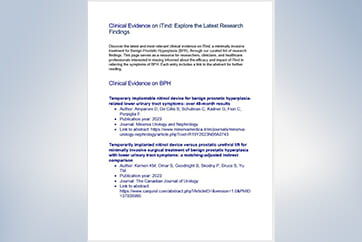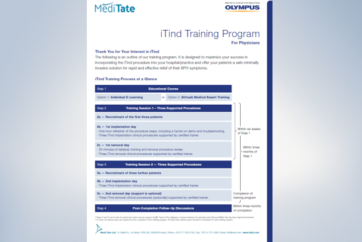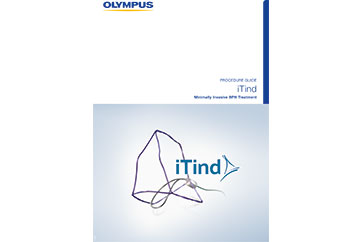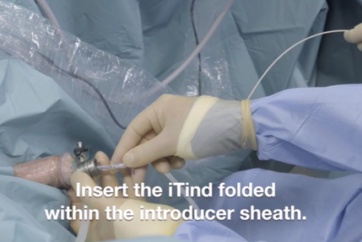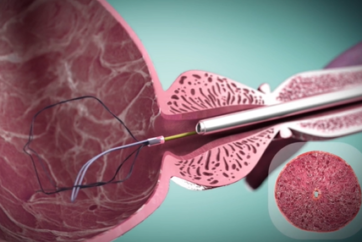Patient Management: Symptoms and Expectations
During the Implantation Period
Patients should be advised that they may experience some of the symptoms listed below during the implantation period. These are the recommendations for managing patient symptoms, should they occur:
Dysuria, Pain in the Area of the Perineum, or the Feeling of Pressure
· We recommend sending patients home with analgesics such as acetaminophen and/or NSAIDs for the reduction of pain and inflammation.
· Either intravenous or oral steroids may be given to reduce swelling and inflammation and speed recovery.
Urinary Frequency and Urgency
· We recommend encouraging patients to drink little and often. The distal end of the device should protrude slightly into the bladder. If the bladder is empty, the bladder walls may rub against the device, causing further irritation.
· In severe cases anticholinergics may be given. However, this may increase the possibility of acute urinary retention (AUR) upon removal of the iTind device.
Hematuria
· Hematuria is usually mild and self-resolving, but it is recommended to inform patients that they may have some blood in their urine, particularly during the first 48 hours of having the iTind implanted.
Irritation of the Meatus
· The retrieval suture can cause irritation to the patient’s meatus, particularly toward the end of the implantation period.
· It is recommended to leave ample slack when fastening the retrieval suture to minimize chaffing.
· Be sure to instruct the patient not to cut or tamper with the retrieval suture.
Dampness
· The retrieval suture can become damp after voiding. It is recommended to provide the patient with absorbent pads in case he decides to use them.
Acute Urinary Retention (AUR)
· The incidence of AUR after the patient has been discharged is very rare.
· We recommend providing the patient with a medical contact person who is familiar with the procedure to contact in case of need.
NOTE: Most of the symptoms above, if experienced, are most common during the first 2-3 days of the iTind being implanted, after which they usually begin to subside.
After Removal
After the removal of the iTind device, patients can expect rapid and effective relief as well as rapid return to daily life:
· Most patients feel an immediate relief of symptoms upon removal of the device and experience a good urinary stream, although symptoms typically continue to improve for up to three, and sometimes even six months.
· Usually, patients may return to normal activities 1-2 days after the iTind has been removed.
Patients should be prepared that they might experience some of the following symptoms:
Mild Episodes of Blood in Urine
· Light blood in the urine may occur for a few days to one week after the procedure.
· This will resolve on its own.
Acute Urinary Retention (AUR)
· Should AUR occur, a standard Tiemann or Foley catheter may be temporarily placed to empty the bladder.
· Routinely, patients can be discharged without a catheter after they have passed urine satisfactorily.
The treatment with iTind avoids many of the complications associated with prescription medication, surgery or permanent implants.
- Content Type

